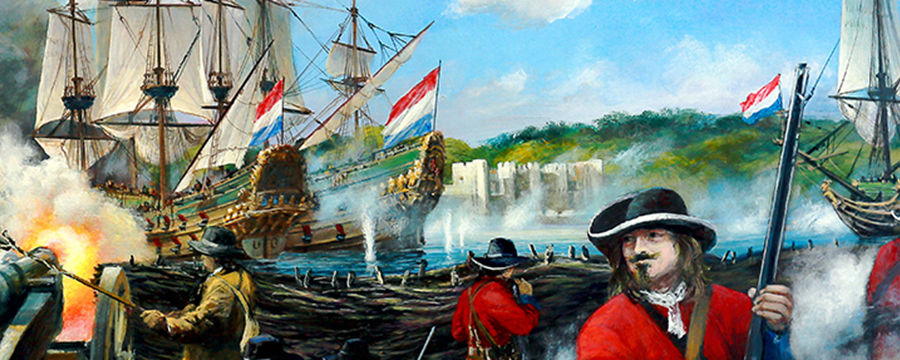The Battle of Medway, also known as ‘The Dutch Raid’, and in Holland ‘Tocht naar Chatham’ (The Battle of Chatham) – when the River Medway was engulfed in flames – marked one of the greatest disasters in England’s naval history.
In June 1667, the Dutch fleet sailed up the River Medway and caught the English unprepared. This daring invasion brought the Second Anglo-Dutch War to an end.
Under Lieutenant Admiral Michiel de Ruyter, the Dutch captured the fort at Sheerness before entering the River Medway to attack the English fleet at Chatham. They broke through the defensive chain and, despite fire from Upnor Castle, towed away the Royal Charles, England’s flagship and burned a number of ships. To prevent their capture and block the channel, the Royal Navy sank around 30 of its largest ships.
Although the dockyard was spared by the arrival of troops and artillery, the attack was nevertheless a humiliating defeat for the English.
In Holland, the action marked the highpoint of the Dutch Golden Age.
Despite proving to be a crushing loss for the English, The Dutch Raid heralded the start of a period of great financial investment in the English naval fleet and as a result, led to it becoming the most powerful in the world, for generations to come.
 |
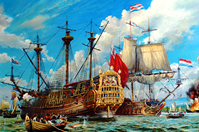 |
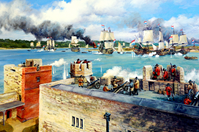 |
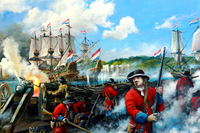 |
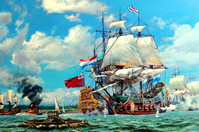 |
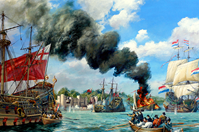 |
Paintings are courtesy of Kevin Clarkson and are on display at the Guildhall Museum, Rochester.
